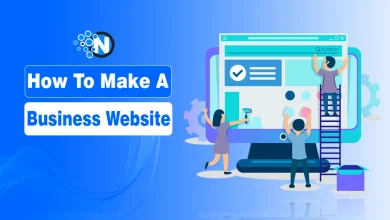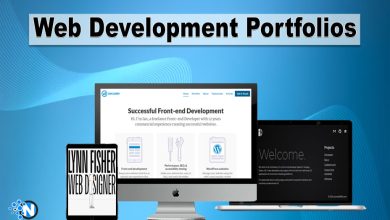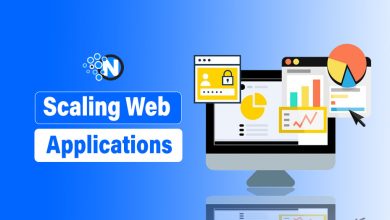The Future of Enterprise Web Development – Top Trends and Innovations

The enterprise web development industry is getting advanced at a very high rate in this competitive business world. To remain competitive in this modern market, companies must have scalable, secure, and user-friendly websites.
The use of advanced technologies such as AI, CMS, and blockchain is redefining the way businesses create their identities in the digital world. You must focus on trends and updates in this fast-developing business.
In this blog post, I will discuss the top trends and innovations to focus on for better enterprise web development.
What is Enterprise Web-Development?
Enterprise web development is used to develop professional and custom websites and web applications. It is tailored according to the audience and for mid-to-large-sized business enterprises.
These websites are not like smaller end websites, which only focus on the basic functions. It is used to build websites that are capable of handling high traffic volumes and data processes. These websites integrate with other platforms such as CRMs and cloud platforms.
These platforms are not developed just for informational purposes. They work like a tool to generate more revenue by driving business growth and operational efficiency.
Enterprise websites are developed in a way to maintain real-time updates and engagement to be scalable and diverse as needed.

Top Trends and Innovations in Enterprise Web Development
Here are the top trends and innovations in enterprise web development that you need to focus on:
AI-Powered Development and Personalization
AI is completely revolutionizing enterprise web development. It automates different tasks of enterprise web development services such as coding, debugging, testing, and saving developers’ time.
There are multiple platforms that developers use for this purpose, such as GitHub Copilot. It enhances workflows that enable teams to focus on creative solutions.
AI also empowers hyper-personalization. It enhances the adaptation of layouts and content according to the user behavior in real-time. This helps in boosting engagement.
Headless CMS
CMS is the content management platform and can be used for creating a front-end and then connecting it to the back-end by using APIs. This enables flexible content delivery across websites, apps, and IoT devices, as mentioned in GeeksforGeeks.
Enterprises such as GitHub also adopt headless CMS for scalability. Multiple modular designs, paired with microservices, enable rapid and instant updates in the systems.
There are various tools, like Strapi’s Enterprise Edition, which support compliance and large-scale sites. This trend is suitable for all those enterprises that require consistent branding across platforms.
Cybersecurity
You have to stay updated on cybersecurity trends and innovations. Cyberattacks cost enterprises around $4.45 million on average per incident, as mentioned in Netguru.
For effective cybersecurity, there are multiple factors you have to consider, such as:
- Zero Trust Architecture (ZTA): It verifies every user and device, and this helps to minimize the risk of data breaches.
- HTTPS: It is necessary because Google marks non-HTTPS sites as unsafe.
- AI-powered threat detection: You can also integrate AI detection, such as biometric logins, to enhance security.
Voice User Interfaces
Voice search optimization is ruling all over the internet. Websites an platforms featuring voice search are getting more preference than others. VUIs enable hands-free navigation.
It is ideal for enterprise apps in healthcare or logistics, because it lets users search nd operate the tasks by voice only.
Developers must optimize for natural language queries, like “find client reports,” rather than complicated, specific questions. But the challenges for this feature include accurate voice recognition across accents.
Enterprises can integrate these interfaces through multiple tools. This enhances accessibility and user engagement.
Blockchain for Secure Transactions
Blockchain offers a decentralized and tamper-proof system for enterprise apps. This lets users have secure transactions on the platforms as it suits them. There will be no limit on the transaction size.
It makes sure secure contract management and data transparency, which increases the trust and reliability score of the company. Enterprises like IBM use blockchain for supply chain apps.
Developers can integrate blockchain through multiple assets, such as Ethereum or Hyperledger. This trend boosts trust in financial and healthcare platforms.
Low-Code/No-Code Platforms
Enterprises often utilize multiple tools for quick prototyping and efficient development. There are advanced Custom Fields that play an important role in simplifying WordPress development.
Low-Code/No-Code platforms effectively balance speed and scalability. This makes them perfect for both emerging startups and established large companies seeking growth and innovation.
Augmented Reality (AR) and Virtual Reality (VR)
AR and VR are revolutionizing the way we interact with digital content. AR seamlessly overlays digital information onto the real-world surroundings.
It enhances the user’s perception and provides immersive experiences without isolating them from their surrounding environment.
Whereas VR creates an entirely new virtual world that allows users to escape reality and explore new realms using VR headsets.
Both technologies are being applied across various domains, including gaming, education, and healthcare. It is offering innovative solutions and experiences that are grabbing more audience and ultimately more revenue.
Summing Up
The future of enterprise web development is being revolutionized by various trends such as AI-powered development, headless CMS, and enhanced cybersecurity.
Being in business, you must prioritize voice user interfaces, blockchain technology for secure transactions, and low-code/no-code platforms to stay competitive.
Additionally, the integration of augmented reality (AR) and virtual reality (VR) is transforming user experiences. Utilizing these innovations not only improves efficiency and personalization but also ensures scalability and security.
To thrive in this digital landscape, enterprises should remain agile and adapt to the evolving web development trends. These trends are defining the future of their enterprise web development.




